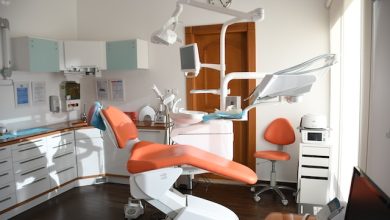3D and 4D Ultrasound: Advancements in Obstetric Imaging and Beyond

Introduction
Ultrasound generation has been a cornerstone of clinical imaging for decades, offering non-invasive insights into the human frame’s inner systems. the advent of 3D and 4D ultrasound has revolutionised the field, imparting a greater complete view of anatomical details and dynamic procedures. This advancement has had a profound impact on obstetric imaging, allowing expectant parents to witness their developing babies in unprecedented detail. Furthermore, the technology’s utility extends beyond obstetrics, finding applications in various medical specialties. At the heart of these advancements lies the best 3D 4D ultrasound machine, a remarkable tool that marries cutting-edge technology with diagnostic precision. In this article, we delve into the evolution, applications, and significance of 3D and 4D ultrasound, highlighting the role of the best ultrasound machines in reshaping medical imaging.
1. Evolution of Ultrasound Imaging
1.1 The Journey from 2D to 3D
Traditional 2D ultrasound, with its grayscale images, has been instrumental in diagnosing and monitoring various medical conditions. However, it provided limited depth perception and detail. The introduction of 3D ultrasound technology marked a significant advancement by capturing three-dimensional images of structures and enhancing spatial understanding.
1.2 The Fourth Dimension: Introducing 4D Ultrasound
The fourth dimension, time, was added to the equation with the introduction of 4D ultrasound. This innovation allowed for the visualisation of real-time movements and dynamic processes within the body. 4D ultrasound transformed static images into dynamic representations, opening up new diagnostic possibilities and patient experiences.
2. Advancements in Obstetric Imaging
2.1 The Joy of Prenatal Bonding
3D and 4D ultrasound technology has revolutionised the prenatal experience. Expectant parents can now witness their baby’s features, expressions, and movements with remarkable clarity. This advancement fosters a deeper emotional connection between parents and their unborn child, enhancing the overall pregnancy journey.
2.2 Detecting Fetal Anomalies
The great 3-D 4D ultrasound machines play a crucial function in detecting and diagnosing fetal anomalies. With enhanced imaging capabilities, healthcare professionals can identify structural abnormalities and potential complications early in pregnancy, allowing for timely interventions and personalised care plans.
2.3 Monitoring Fetal Development
The dynamic nature of 4D ultrasound enables the real-time observation of fetal movements, heartbeats, and even facial expressions. This level of insight aids healthcare providers in assessing fetal well-being and developmental milestones throughout pregnancy.
3. Beyond Obstetrics: Applications in Medicine

3.1 Cardiology
3D and 4D ultrasound have found applications beyond obstetrics, particularly in cardiology. These technologies offer detailed views of the heart’s anatomy and function, assisting cardiologists in diagnosing congenital heart defects, valvular disorders, and other cardiac conditions.
3.2 Musculoskeletal Imaging
In the field of orthopaedics, within the field of orthopaedics, 3-D and 4D ultrasound are treasured tools for assessing musculoskeletal accidents and issues.
3.3 Gynaecology
Gynaecologists utilise 3D and 4D ultrasound to visualise pelvic organs, detect abnormalities, and guide minimally invasive procedures. These technologies enhance the precision of diagnoses and interventions in gynaecological care.
4. The Role of the Best 3D 4D Ultrasound Machine
4.1 Cutting-Edge Technology
The best 3D 4D ultrasound machines incorporate advanced technology, such as multiplane transducers and sophisticated image processing algorithms. These features enable superior image quality and accurate renderings of anatomical structures.
4.2 Real-Time Imaging
Real-time imaging capabilities of the best ultrasound machines provide immediate insights into dynamic processes within the body. This is particularly valuable in scenarios where movement or changes occur rapidly, such as in foetal monitoring or cardiac assessments.
4.3 Ergonomics and User Experience
The best 3D 4D ultrasound machines prioritise user experience and ergonomics. Intuitive user interfaces and ergonomic designs enhance healthcare professionals’ efficiency and comfort during imaging procedures.
5. Challenges and Considerations
5.1 Image Quality and Interpretation
While 3D and 4D ultrasound offer remarkable imaging capabilities, image quality can be affected by factors such as fetal position, maternal body habitus, and technical parameters. Radiologists and sonographers must exercise expertise in image interpretation to derive accurate diagnoses.
5.2 Ethical Considerations
The increased clarity and detail provided by 3D and 4D ultrasound have raised ethical questions about the potential implications of prenatal imaging. Healthcare providers must navigate discussions with expectant parents, ensuring they have a comprehensive understanding of the information provided.
6. Future Directions and Innovations
6.1 Artificial Intelligence (AI) Integration
Artificial intelligence (AI) is poised to enhance 3D and 4D ultrasound imaging further. AI algorithms can assist in automating image analysis, detecting anomalies, and improving diagnostic accuracy, thereby augmenting healthcare professionals’ capabilities.
6.2 Point-of-Care and Telemedicine
Advancements in portable ultrasound technology and telemedicine enable healthcare providers to perform 3D and 4D imaging at the patient’s bedside or remotely. This technology holds promise for expanding access to high-quality imaging in various clinical settings.
7. Conclusion
The evolution from traditional 2D ultrasound to the realm of 3D and 4D imaging has transformed medical diagnostics and patient experiences. The best 3D 4D ultrasound machines stand as champions of innovation, bridging technological prowess with diagnostic precision. These machines have revolutionised obstetric imaging, offering expectant parents intimate glimpses of their unborn child and empowering healthcare professionals to detect foetal anomalies early. Beyond obstetrics, the applications of 3D and 4D ultrasound extend to cardiology, musculoskeletal imaging, gynaecology, and more, enriching medical practice across specialties.
While challenges such as image quality variability and ethical considerations persist, ongoing advancements, including AI integration and telemedicine, promise to further amplify the impact of 3D and 4D ultrasound. The journey of this technology is a testament to the ever-evolving panorama of scientific imaging and its potential to reshape the future of healthcare. As we preserve to discover new dimensions of the human body through the lens of 3-d and 4D ultrasound, we embody a destiny where innovation and compassion converge to decorate affected person care and knowledge.



